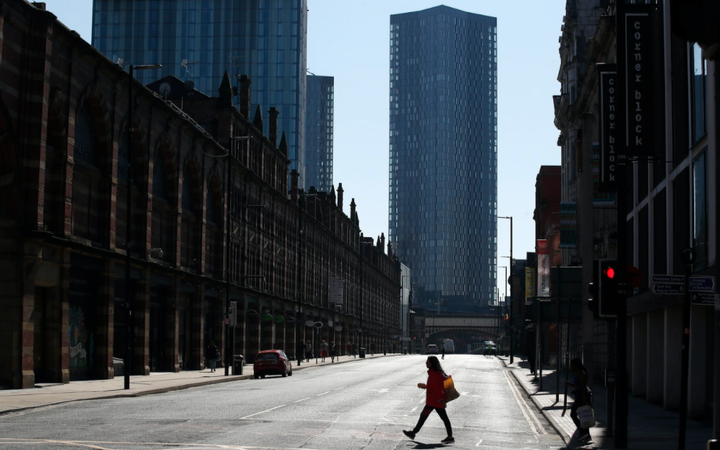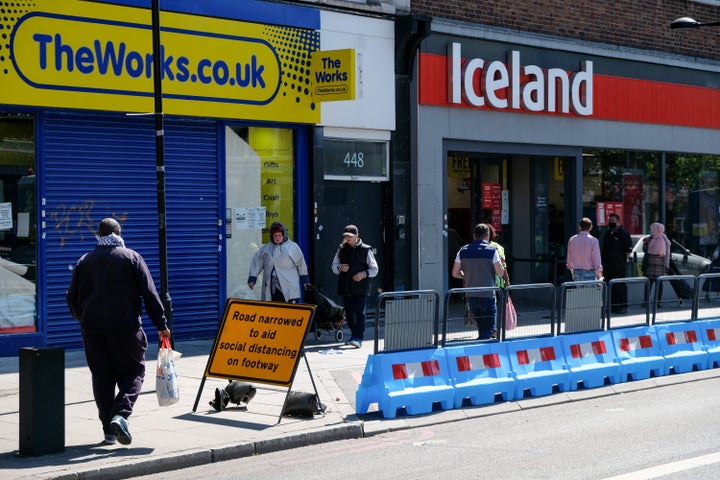Get the latest on coronavirus. Sign up to the Daily Brief for news, explainers, how-tos, opinion and more.
Until a vaccine is readily available, countries around the world will have to adopt ways of managing Covid-19 as they attempt to re-accommodate workforces and restart their economies. There are currently no effective treatments for coronavirus and a vaccine that is widely available is likely to be at least a year away.
Various different scientific models for doing this have been suggested – with the common thread that the return to work is going to be anything but typical. Here are some of them that could be instated in the UK.
50 days’ strict lockdown, 30 days’ eased restrictions, and repeat
An 18-month rolling cycle of 50 days of strict lockdown measures followed by 30 days of easing of restrictions could be an “effective” approach that would keep intensive care demand within capacity and “may allow populations and their national economies to ‘breathe’ at intervals”, according to a study published in the European Journal of Epidemiology.
That’s in contrast to a continuous, three-month strategy of suppression measures, such as strict physical distancing and lockdown, which would reduce new coronavirus cases to near zero in most countries, the study suggested.
Looser mitigation strategies such as hygiene rules and shielding of vulnerable groups might require approximately six-and-a-half months to reach the same point, according to the research.

But the study suggested that such prolonged lockdowns would be unsustainable in most countries due to the potential knock-on effects on the economy and livelihoods.
An international team of researchers from the Global Dynamic Interventions Strategies for Covid-19 Collaborative Group modelled three alternative scenarios across 16 countries, from Belgium to India, that vary in setting and income.
They did not model the scenarios in the UK but said they expect the situation to be “very similar to that in other high-income countries”.
Dr Rajiv Chowdhury, a global health epidemiologist at Cambridge University and the paper’s lead author, said: “Our models predict that dynamic cycles of 50-day suppression followed by a 30-day relaxation are effective at lowering the number of deaths significantly for all countries throughout the 18-month period.”
He said the intermittent relaxation of measures “might make this solution more sustainable, especially in resource-poor regions”.
This 18-month period of 50 days on and 30 days off could still see 130,000 deaths across the 16 countries, it is forecast.
Professor Oscar Franco, from the University of Bern in Switzerland, said: “Our study provides a strategic option that countries can use to help control Covid-19 and delay the peak rate of infections.
“This should allow them to buy valuable time to shore up their health systems and increase efforts to develop new treatments or vaccines.
“There’s no simple answer to the question of which strategy to choose.
“Countries – particularly low-income countries – will have to weigh up the dilemma of preventing Covid-19-related deaths and public health system failure with the long-term economic collapse and hardship.”
The study indicated that two other scenarios which were modelled would result in intensive care units being overwhelmed.

No lockdown restrictions
The first scenario modelled the impact of imposing no measures.
It indicated a total of 7.8m deaths across the 16 countries with the epidemic lasting nearly 200 days in most countries.
50 days’ ‘loose’ lockdown and 30 days without restrictions
The second scenario modelled a rolling cycle of looser 50-day mitigation measures followed by a 30-day relaxing.
It indicated 3.5m deaths and a longer pandemic of around 12 months in high-income countries and 18 months or longer in other settings.
Four days on, 10 days off
A further model by Imperial College London chemical biologist Professor Keith Willison for the Adam Smith Institute suggests a four days on, 10 days off cyclical strategy be implemented for both workers and school-goers.
It would see populations divided into two groups, with one group working or attending school for four days from, say, Monday to Thursday, and then entering a 10-day isolation period where individuals work from home in lockdown. This would see the workforce divided into distinct groups who do not overlap when in the office.


The model – devised by the Weizmann Institute of Science in Israel – would see an end to the standard seven-day week and two-day weekend structure as we know it, with workers taking their time off at varying times during their lockdown periods.
While the initial group is in lockdown, the second group would attend work and school. Since the number of people going to work and school would be much smaller than usual, physical distancing would be more easily observed and fewer people would be using public transport.
The study recommends that the groups correlate so that children are kept at home at the same time as their parents with prescribed work from their teachers. It also concedes the number of work days can be varied depending on the success of the model. If, for instance, an increase in Covid-19 cases is reported, a two-12 cycle could be trialled. Predictions using the model cite a diminishing infection rate over a two-month period and no second peak.

